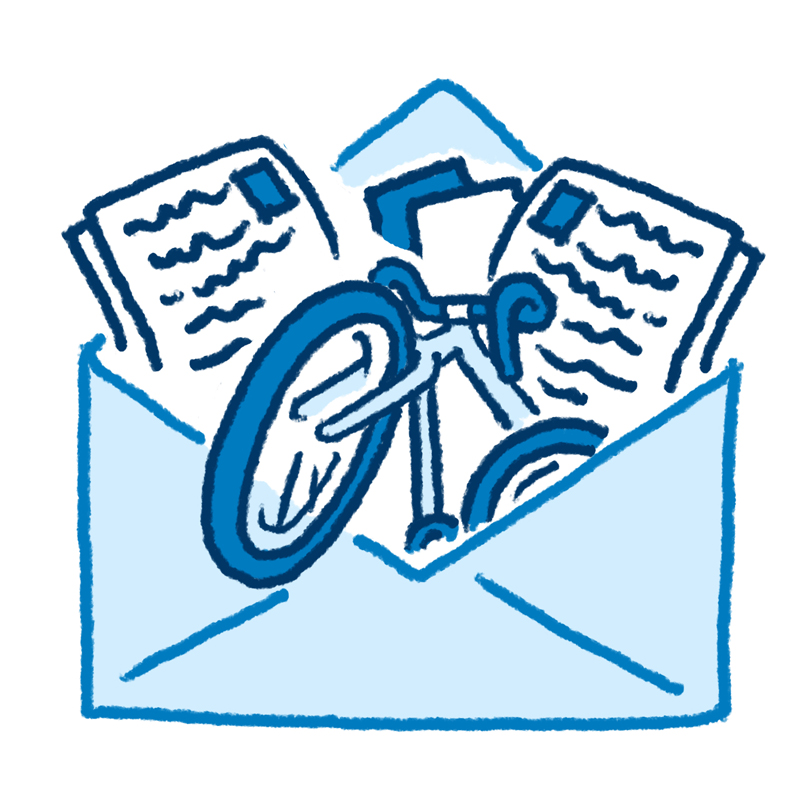Going Off-Grid
When I rode across mainland China, I was amazed at how easy it was. All I needed was a smartphone. But as useful as my phone was for navigation, it tethered me to our high-tech, ultra-convenient modern world. For my next tour, I’ve decided to ditch technology altogether.
Over 4,000 kilometres this summer, I was never at a loss for directions. A multitude of apps for everything from altitude to road quality to accommodation options meant that my riding was interrupted by very few real surprises.
“But that’s a good thing!” I can practically hear my Dad, an enthusiastic gadget freak, saying. Think of all the frustrations you’ve avoided! All the time you’ve saved! The technology was painstakingly developed for exactly this purpose!
He’s right, of course. I did save time and plenty of effort with powerful tech at my fingertips. But as the weeks rolled by, I started noticing several caveats to all this saved time.
First, I spent more of my day looking at a screen than I would have liked. I was out in nature but the details of my route were, perversely, distracting me from the natural world. Second, with my phone in hand, I couldn’t help but stay connected to the urban world I was trying to leave behind. I saw the same email, Whatsapp, and missed call notifications as always, and I had video contact with my anxious parents almost every day. I felt armed to the teeth with tech — checking maps, tracking my distance and speed, and taking photos and videos to upload in real time to various social media accounts, feeding the hungry followers who told me they loved keeping track of my travels.

I never looked at road signs or stopped to ask directions. I didn’t need to. After a while, I realized that such detailed route planning had almost removed the element of wayfinding that makes long distance bike trips so enjoyable. I had gained time but had I lost quality?
Ditching the phone would be a completely different experience. I would be forced to interact with my environment, to talk to locals if (when) I got lost, and to really pay attention to my surroundings.
The idea filled me with just enough terror for me to think that it might be a good one.
But what if you get lost?
This is the first concern that comes to mind. If I don’t have a GPS app on my phone following my planned route at every turn, it might take longer to get where I need to go, working under the assumption that I’ll take a wrong turn or have to study the map to find my way.

But as long as I’m prepared, getting lost on a road bike tour doesn’t have to be scary. I’ll allow myself extra time and supplies and be flexible with my destination. I won’t plan to go off-road into remote, uninhabited areas, but I’ll still be able to get away from the hustle and bustle and enjoy the cycling. A compass, a good map, and a decent grasp of the local language might just be enough.
What if something bad happened?
Now this is more of an issue.
Cycling carries risks. What if my bike breaks down in the middle of nowhere or I get sick? I’ll need to be able to contact someone in such an emergency. The story of Chris McCandless in Into the Wild is enough to warn anyone of how horrifically easy it is to get into trouble when truly isolated. For a long tour, the argument for a phone is stronger because the likelihood of something going awry is greater. For a shorter tour, however, that likelihood is lower.
While the stereotyped dangers people read about in the news — attack or murder — are scary, even more so for marginalized people, traffic is by far my biggest danger when I cycle, a risk which is minimized as much as possible by exercising caution and avoiding high-traffic, high-speed roads.
If I break down or am injured, realistically what I’ll need at the moment is someone to give me a lift or call for help. In choosing a less remote route, I know someone will come by eventually, and they’ll likely have a phone or an empty seat. For extra safety and fun, I’m considering riding with a friend who is up for the challenge.
A few rules of thumb, then, for my phoneless ride:
- Stay in populated areas where I feel comfortable in case of emergency.
- Ride cautiously to minimize the largest risk, traffic.
- Keep distances relatively short, so that accidents are unlikely and so that in the absolute worst case scenario, I can walk back the way I came or the remainder to my destination.
- Carry twice the water I’ll need, just in case.
- Double the fun by cycling with a companion.
Won’t your family worry?
Probably, but my family worries about everything. That’s their job. My job is to be prepared enough that their worry is unfounded.
One way I could stay in contact with family, and to let them know where I am, without a phone is to use a satellite messenger like a Spot or Garmin InReach. I can send automated messages to a few select contacts letting them know all is well. Included in the message is a link to a map with my location. Satellite messengers are vital for trips in remote areas where phones are useless as communication devices anyway.
Pleased with my new objective, I’m now looking at three or four hundred kilometer routes to test the waters. As I plan for this type of journey, I’m brushing up on my knowledge of basic repairs, map reading, and the local language.
And — I think to myself with a twinge of shame — perhaps it won’t hurt to bring a Nokia brick for emergencies.


